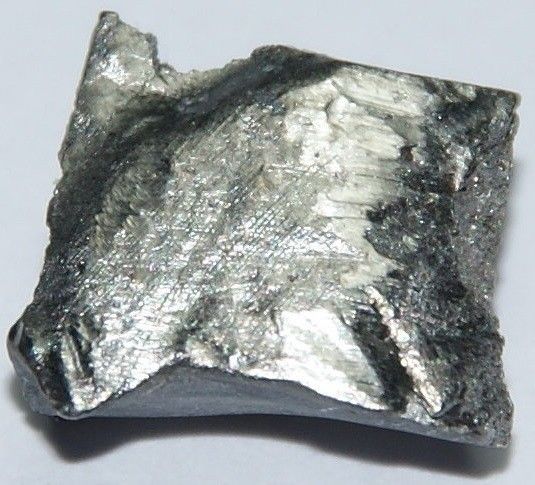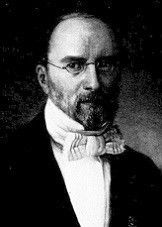Rare earth military materials – rare earth terbium
Rare earth elements are indispensable for the development of high-tech such as new energy and materials, and have wide application value in fields such as aerospace, national defense, and military industry. The results of modern warfare indicate that rare earth weapons dominate the battlefield, rare earth technological advantages represent military technological advantages, and having resources is guaranteed. Therefore, rare earths have also become strategic resources that major economies around the world compete for, and key raw material strategies such as rare earths often rise to national strategies. Europe, Japan, the United States and other countries and regions pay more attention to key materials such as rare earth. In 2008, rare earth materials were listed as “key materials strategy” by the United States Department of Energy; At the beginning of 2010, the European Union announced the establishment of a strategic reserve of rare earths; In 2007, the Japanese Ministry of Education, Culture, Science and Technology, as well as the Ministry of Economy, Industry and Technology, had already proposed the “Element Strategy Plan” and the “Rare Metal Alternative Materials” plan. They have taken continuous measures and policies in resource reserves, technological progress, resource acquisition, and the search for alternative materials. Starting from this article, the editor will introduce in detail the important and even indispensable historical development missions and roles of these rare earth elements.
Terbium belongs to the category of heavy rare earths, with a low abundance in the Earth’s crust at only 1.1 ppm. Terbium oxide accounts for less than 0.01% of the total rare earths. Even in the high yttrium ion type heavy rare earth ore with the highest content of terbium, the terbium content only accounts for 1.1-1.2% of the total rare earth, indicating that it belongs to the “noble” category of rare earth elements. Terbium is a silver gray metal with ductility and relatively soft texture, which can be cut open with a knife; Melting point 1360 ℃, boiling point 3123 ℃, density 8229 4kg/m3. For over 100 years since the discovery of terbium in 1843, its scarcity and value have prevented its practical application for a long time. It is only in the past 30 years that terbium has shown its unique talent.
The Discovery of Terbium
During the same period when lanthanum was discovered, Karl G. Mosander of Sweden analyzed the initially discovered yttrium and published a report in 1842, clarifying that the initially discovered yttrium earth was not a single elemental oxide, but an oxide of three elements. In 1843, Mossander discovered the element terbium through his research on yttrium earth. He still named one of them yttrium earth and one of them erbium oxide. It was not until 1877 that it was officially named terbium, with the element symbol Tb. Its naming comes from the same source as yttrium, originating from the village of Ytterby near Stockholm, Sweden, where yttrium ore was first discovered. The discovery of terbium and two other elements, lanthanum and erbium, opened the second door to the discovery of rare earth elements, marking the second stage of their discovery. It was first purified by G. Urban in 1905.
Mossander
Application of terbium
The application of terbium mostly involves high-tech fields, which are technology intensive and knowledge intensive cutting-edge projects, as well as projects with significant economic benefits, with attractive development prospects. The main application areas include: (1) being utilized in the form of mixed rare earths. For example, it is used as a rare earth compound fertilizer and feed additive for agriculture. (2) Activator for green powder in three primary fluorescent powders. Modern optoelectronic materials require the use of three basic colors of phosphors, namely red, green, and blue, which can be used to synthesize various colors. And terbium is an indispensable component in many high-quality green fluorescent powders. (3) Used as a magneto optical storage material. Amorphous metal terbium transition metal alloy thin films have been used to manufacture high-performance magneto optical discs. (4) Manufacturing magneto optical glass. Faraday rotatory glass containing terbium is a key material for manufacturing rotators, isolators, and circulators in laser technology. (5) The development and development of terbium dysprosium ferromagnetostrictive alloy (TerFenol) has opened up new applications for terbium.
For agriculture and animal husbandry
Rare earth terbium can improve the quality of crops and increase the rate of photosynthesis within a certain concentration range. The complexes of terbium have high biological activity, and the ternary complexes of terbium, Tb (Ala) 3BenIm (ClO4) 3-3H2O, have good antibacterial and bactericidal effects on Staphylococcus aureus, Bacillus subtilis, and Escherichia coli, with broad-spectrum antibacterial properties. The study of these complexes provides a new research direction for modern bactericidal drugs.
Used in the field of luminescence
Modern optoelectronic materials require the use of three basic colors of phosphors, namely red, green, and blue, which can be used to synthesize various colors. And terbium is an indispensable component in many high-quality green fluorescent powders. If the birth of rare earth color TV red fluorescent powder has stimulated the demand for yttrium and europium, then the application and development of terbium have been promoted by rare earth three primary color green fluorescent powder for lamps. In the early 1980s, Philips invented the world’s first compact energy-saving fluorescent lamp and quickly promoted it globally. Tb3+ions can emit green light with a wavelength of 545nm, and almost all rare earth green fluorescent powders use terbium as an activator.
The green fluorescent powder used for color TV cathode ray tubes (CRTs) has always been mainly based on cheap and efficient zinc sulfide, but terbium powder has always been used as projection color TV green powder, such as Y2SiO5: Tb3+, Y3 (Al, Ga) 5O12: Tb3+, and LaOBr: Tb3+. With the development of large screen high-definition television (HDTV), high-performance green fluorescent powders for CRTs are also being developed. For example, a hybrid green fluorescent powder has been developed abroad, consisting of Y3 (Al, Ga) 5O12: Tb3+, LaOCl: Tb3+, and Y2SiO5: Tb3+, which have excellent luminescence efficiency at high current density.
The traditional X-ray fluorescent powder is calcium tungstate. In the 1970s and 1980s, rare earth fluorescent powders for sensitization screens were developed, such as terbium activated lanthanum sulfide oxide, terbium activated lanthanum bromide oxide (for green screens), and terbium activated yttrium sulfide oxide. Compared with calcium tungstate, rare earth fluorescent powder can reduce the time of X-ray irradiation for patients by 80%, improve the resolution of X-ray films, extend the lifespan of X-ray tubes, and reduce energy consumption. Terbium is also used as a fluorescent powder activator for medical X-ray enhancement screens, which can greatly improve the sensitivity of X-ray conversion into optical images, improve the clarity of X-ray films, and greatly reduce the exposure dose of X-rays to the human body (by more than 50%).
Terbium is also used as an activator in the white LED phosphor excited by blue light for new semiconductor lighting. It can be used to produce terbium aluminum magneto optical crystal phosphors, using blue light emitting diodes as excitation light sources, and the generated fluorescence is mixed with the excitation light to produce pure white light.
The electroluminescent materials made from terbium mainly include zinc sulfide green fluorescent powder with terbium as the activator. Under ultraviolet irradiation, organic complexes of terbium can emit strong green fluorescence and can be used as thin film electroluminescent materials. Although significant progress has been made in the study of rare earth organic complex electroluminescent thin films, there is still a certain gap from practicality, and research on rare earth organic complex electroluminescent thin films and devices is still in depth.
The fluorescence characteristics of terbium are also used as fluorescence probes. The interaction between ofloxacin terbium (Tb3+) complex and deoxyribonucleic acid (DNA) was studied using fluorescence and absorption spectra, such as the fluorescence probe of ofloxacin terbium (Tb3+). The results showed that the ofloxacin Tb3+probe can form a groove binding with DNA molecules, and deoxyribonucleic acid can significantly enhance the fluorescence of the ofloxacin Tb3+system. Based on this change, deoxyribonucleic acid can be determined.
For magneto optical materials
Materials with Faraday effect, also known as magneto-optical materials, are widely used in lasers and other optical devices. There are two common types of magneto optical materials: magneto optical crystals and magneto optical glass. Among them, magneto-optical crystals (such as yttrium iron garnet and terbium gallium garnet) have the advantages of adjustable operating frequency and high thermal stability, but they are expensive and difficult to manufacture. In addition, many magneto-optical crystals with high Faraday rotation angles have high absorption in the short wave range, which limits their use. Compared with magneto optical crystals, magneto optical glass has the advantage of high transmittance and is easy to be made into large blocks or fibers. At present, magneto-optical glasses with high Faraday effect are mainly rare earth ion doped glasses.
Used for magneto optical storage materials
In recent years, with the rapid development of multimedia and office automation, the demand for new high-capacity magnetic discs has been increasing. Amorphous metal terbium transition metal alloy thin films have been used to manufacture high-performance magneto optical discs. Among them, the TbFeCo alloy thin film has the best performance. Terbium based magneto-optical materials have been produced on a large scale, and magneto-optical discs made from them are used as computer storage components, with storage capacity increased by 10-15 times. They have the advantages of large capacity and fast access speed, and can be wiped and coated tens of thousands of times when used for high-density optical discs. They are important materials in electronic information storage technology. The most commonly used magneto-optical material in the visible and near-infrared bands is Terbium Gallium Garnet (TGG) single crystal, which is the best magneto-optical material for making Faraday rotators and isolators.
For magneto optical glass
Faraday magneto optical glass has good transparency and isotropy in the visible and infrared regions, and can form various complex shapes. It is easy to produce large-sized products and can be drawn into optical fibers. Therefore, it has broad application prospects in magneto optical devices such as magneto optical isolators, magneto optical modulators, and fiber optic current sensors. Due to its large magnetic moment and small absorption coefficient in the visible and infrared range, Tb3+ions have become commonly used rare earth ions in magneto optical glasses.
Terbium dysprosium ferromagnetostrictive alloy
At the end of the 20th century, with the continuous deepening of the world technological revolution, new rare earth application materials were rapidly emerging. In 1984, Iowa State University, the Ames Laboratory of the US Department of Energy, and the US Navy Surface Weapons Research Center (from which the main personnel of the later established Edge Technology Corporation (ET REMA) came) collaborated to develop a new rare earth intelligent material, namely terbium dysprosium ferromagnetic magnetostrictive material. This new intelligent material has excellent characteristics of quickly converting electrical energy into mechanical energy. The underwater and electro-acoustic transducers made of this giant magnetostrictive material have been successfully configured in naval equipment, oil well detection speakers, noise and vibration control systems, and ocean exploration and underground communication systems. Therefore, as soon as the terbium dysprosium iron giant magnetostrictive material was born, it received widespread attention from industrialized countries around the world. Edge Technologies in the United States began producing terbium dysprosium iron giant magnetostrictive materials in 1989 and named them Terfenol D. Subsequently, Sweden, Japan, Russia, the United Kingdom, and Australia also developed terbium dysprosium iron giant magnetostrictive materials.
From the history of the development of this material in the United States, both the invention of the material and its early monopolistic applications are directly related to the military industry (such as the navy). Although China’s military and defense departments are gradually strengthening their understanding of this material. However, with the significant enhancement of China’s comprehensive national strength, the demand for achieving a 21st century military competitive strategy and improving equipment levels will definitely be very urgent. Therefore, the widespread use of terbium dysprosium iron giant magnetostrictive materials by military and national defense departments will be a historical necessity.
In short, the many excellent properties of terbium make it an indispensable member of many functional materials and an irreplaceable position in some application fields. However, due to the high price of terbium, people have been studying how to avoid and minimize the use of terbium in order to reduce production costs. For example, rare earth magneto-optical materials should also use low-cost dysprosium iron cobalt or gadolinium terbium cobalt as much as possible; Try to reduce the content of terbium in the green fluorescent powder that must be used. Price has become an important factor restricting the widespread use of terbium. But many functional materials cannot do without it, so we have to adhere to the principle of “using good steel on the blade” and try to save the use of terbium as much as possible.



